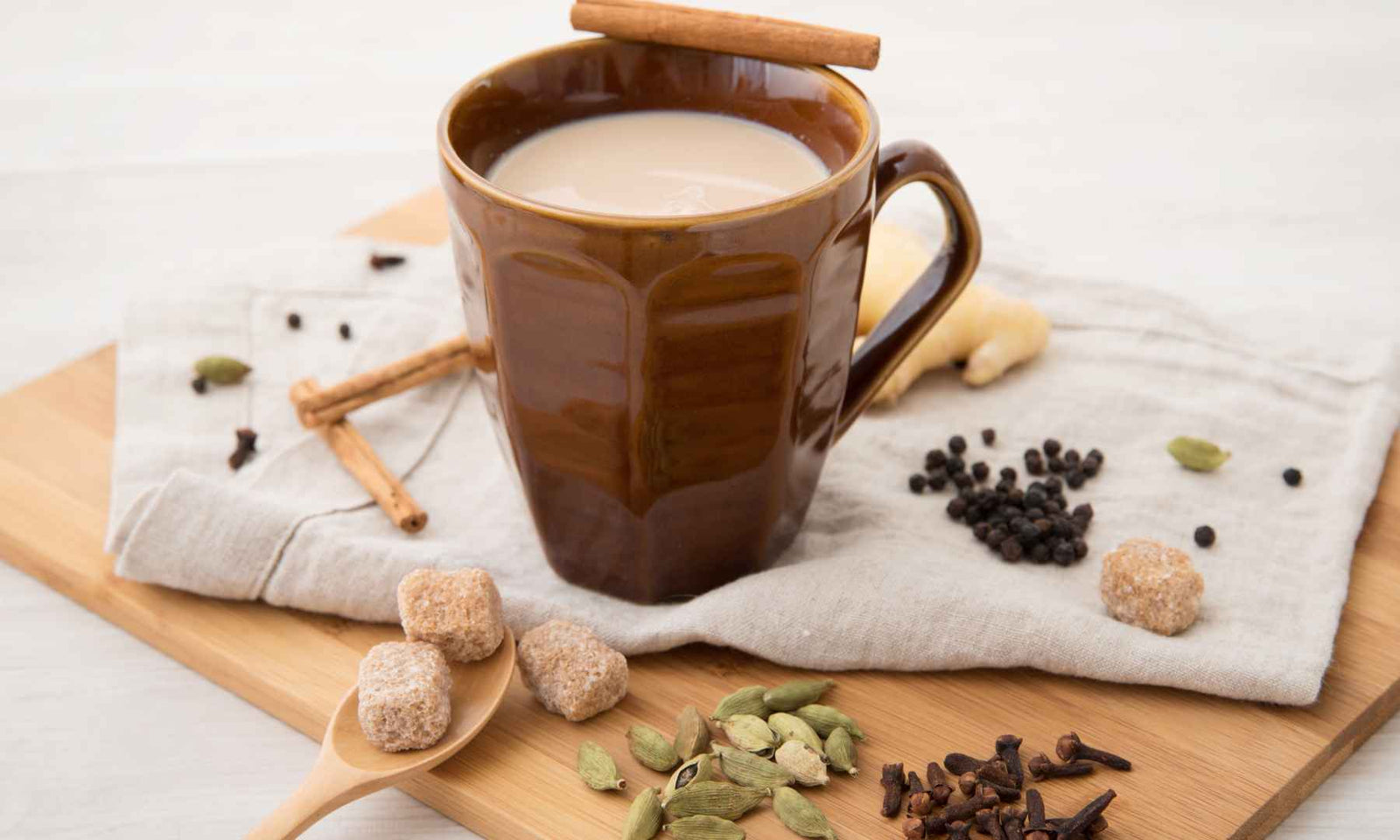When I first started creating fall-scented candles, I came across two intriguing fragrances: "Honey Roasted Pumpkin and Chai Spice" and "Vanilla Chai Latte." The pumpkin and vanilla were familiar, but chai? That was new territory for me. Little did I know, I was about to embark on a aromatic journey into a world of warmth, spice, and centuries of tradition.
What Exactly is Chai?
As it turns out, "chai" is simply the Hindi word for "tea." But when we talk about chai in the Western world, we're usually referring to a specific type of spiced milk tea, also known as Masala Chai in India. This fragrant beverage is a blend of black tea, milk, aromatic spices, and often a sweetener.
A Rich History in Every Sip
Chai's story begins thousands of years ago in the royal courts of India and Southeast Asia. Originally, it wasn't a beverage at all, but a healing spice mixture used in Ayurvedic medicine. It wasn't until the British established tea plantations in India in the 1800s that chai, as we know it today, began to take shape.
By the early 20th century, chai had become a staple in Indian households and street corners, with each family and vendor having their own special recipe.
What's in Your Cup?
While recipes can vary, a typical chai might include:
- Black tea
- Milk (dairy or plant-based)
- A spice mixture that often includes cinnamon, cardamom, ginger, cloves, and black pepper
- A sweetener like honey or sugar
It's this aromatic spice blend that gives chai its distinctive flavor and aroma – the same enticing scent that drew me to those candle fragrances!
Chai's Journey to American Cups
Chai began its rise to popularity in the United States in the 1990s. But it was in the early 2000s, when major coffee shop chains like Starbucks introduced the "Chai Tea Latte," that it really took off. Today, you can find chai in various forms, from traditional brews to tea bags, concentrates, and even as a flavoring in products like ice cream, chocolates, and yes, scented candles!
Why We Love Chai
The appeal of chai goes beyond its delicious taste. Its warm, comforting flavors make it perfect for fall and winter (though many enjoy it year-round). The spices used in chai are also associated with various health benefits in traditional medicine. Plus, its versatility means there's a chai for everyone, whether you prefer it strong and spicy or creamy and sweet.
In essence, chai embodies the very spirit of hygge. Its warmth, the ritual of preparation, and the way it brings people together all contribute to that cozy, contented feeling we associate with hygge. Whether you're curled up with a book and a mug of chai, or sharing a pot with friends, you're experiencing hygge at its finest.
Bringing Chai Home
Want to experience the comfort of chai beyond our scented candles? Here's a simple recipe to make your own chai at home:
Homemade Chai Recipe
- 2 cups water
- 2 black tea bags
- 2 cinnamon sticks
- 4 green cardamom pods, lightly crushed
- 4 cloves
- 1-inch piece of fresh ginger, sliced
- 1/4 tsp black peppercorns
- 1 cup milk
- Sugar or honey to taste
- Bring water and spices to a boil in a saucepan. Simmer for 5 minutes.
- Add tea bags and steep for 3-5 minutes.
- Add milk and sugar, bring to a simmer.
- Strain into mugs and enjoy!
Whether you're sipping a homemade brew or enjoying the scent of our chai-inspired candles, you're partaking in a rich tradition that spans centuries and continents. So the next time you catch a whiff of those warm, spicy notes, remember: you're experiencing more than just a pleasant scent – you're sensing a piece of history.


